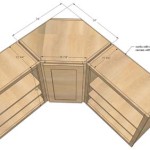Staining Existing Kitchen Cabinets: A Step-by-Step Guide
Transforming the look of your kitchen without breaking the bank is possible by staining existing kitchen cabinets. This DIY project is not for the faint of heart, but with proper preparation and careful execution, it can yield stunning results. Here's a comprehensive guide to help you get started.
1. Preparation
Start by thoroughly cleaning the cabinets with a degreaser. Remove all hardware, including knobs, handles, and hinges. Sand the cabinet surfaces lightly with fine-grit sandpaper to prepare them for staining. Remove all dust and debris with a tack cloth.
2. Choose the Right Stain
The type of stain you choose will determine the final color and finish of your cabinets. Oil-based stains penetrate deeply into the wood and offer a durable finish. Water-based stains are easier to apply but may require multiple coats for a richer color.
3. Test the Stain
Before applying the stain to the entire cabinet, test it on an inconspicuous area to ensure you're satisfied with the color. Apply a thin layer of stain and let it dry completely. If the color is too light, apply additional coats until you achieve the desired shade.
4. Apply the Stain
Using a brush or a foam applicator, apply the stain to the cabinets in even strokes. Follow the grain of the wood and avoid overworking the surface. Allow the stain to penetrate for the recommended time specified by the manufacturer.
5. Wipe Off the Excess
Use a clean cloth to wipe off any excess stain that may have settled on the surface. This will help prevent blotches and ensure an even finish. Wipe in the direction of the wood grain and remove all traces of stain.
6. Allow to Dry
Allow the cabinets to dry completely before applying a protective finish. The drying time will vary depending on the stain and the temperature and humidity of the environment. Use a fan or open windows to accelerate the drying process.
7. Apply a Protective Finish
Once the cabinets are completely dry, protect the stain with a clear finish such as polyurethane or lacquer. A matte finish will reduce the shine, while a glossy finish will enhance the color and add depth. Apply two to three coats of the protective finish and allow each coat to dry before applying the next.
Conclusion
Staining existing kitchen cabinets is a rewarding project that can transform the look of your kitchen. With careful preparation, attention to detail, and the right tools and materials, you can achieve a professional-looking finish. Don't be afraid to experiment with different stains and finishes to create a unique look that matches your style and preferences.

How To Stain Oak Cabinetry Tutorial The Kim Six Fix

Staining Your Wood Cabinets Darker Young House Love

How To Stain Wood Cabinets True Value

Our Best Tips For Staining Cabinets Or Re

Cabinet Staining Gde San Antonio

Refinishing Kitchen Cabinets Modern Refacing Made Easy Wisewood

Staining Your Wood Cabinets Darker Young House Love

Painted Vs Stained Cabinets Which Fits Your Style Best

How To Stain Cabinets That Are Already Stained

How To Stain Cabinets
Related Posts








